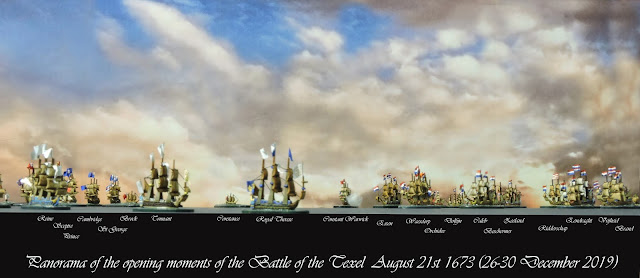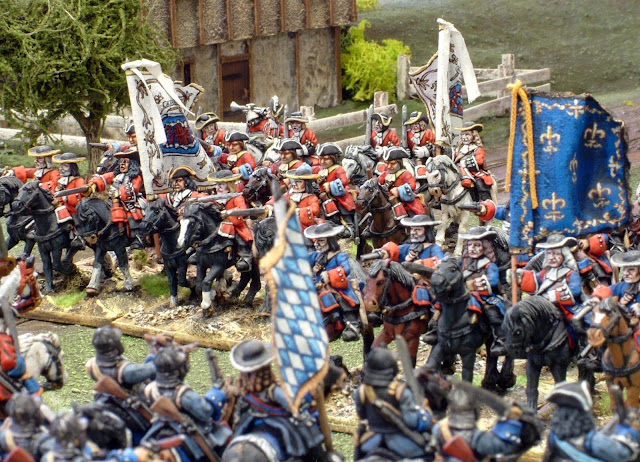 |
| Neerwinden/Landen 1693 |
I have been gaming the period 1666-1720 for thirty years this year. Despite forays into other periods of which I am fond, I always return to my favourite. Recently, I have agreed to write a title for Helion about wargaming the period 1666-1697 specifically and that has made me reflect on why I maintain an enduring fascination for this 60 year span of history.
So, here are my top ten reasons for straying no further than the second half of the 17th century;
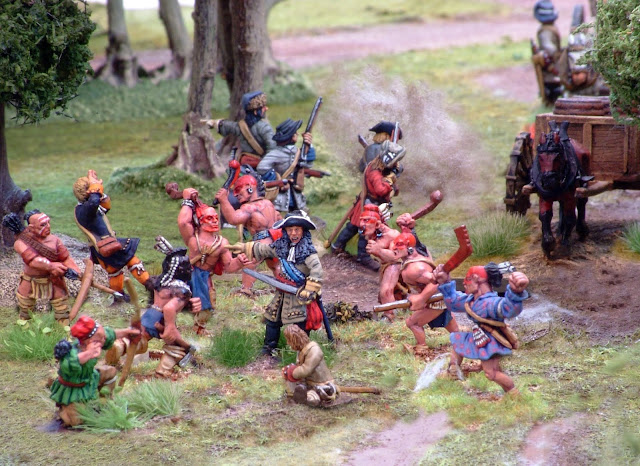 |
| Fighting for King William in New England |
1. World War
During this period the interconnected conflicts involving France, England, Scotland, Ireland, The Dutch Republic, Spain, Portugal, Poland -Lithuania, Persia, the Habsburg Empire, the Ottoman Empire, Russia, Denmark, Sweden, Brandenburg and Venice extended far beyond Europe. Both on land and at sea, fighting took place in North, Central and South America, North and West Africa, the Gulf, India, South East Asia and China.
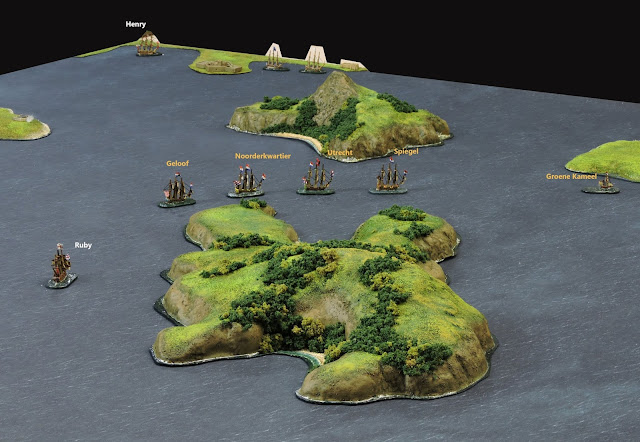 |
| De Ruyter in West Africa against the English 1664 |
The settings for scenarios continue to reveal themselves creating an endless stream of table top possibilities ranging from bizarre skirmishes with Omani pirates and Indian soldiers fighting Portuguese priests, loyal slaves and soldiers in Mombasa to the French being besieged in Bangkok by tens of thousands of Siamese. For those who think this period is about Sedgemoor, the Boyne and Neerwinden. Look again, please.
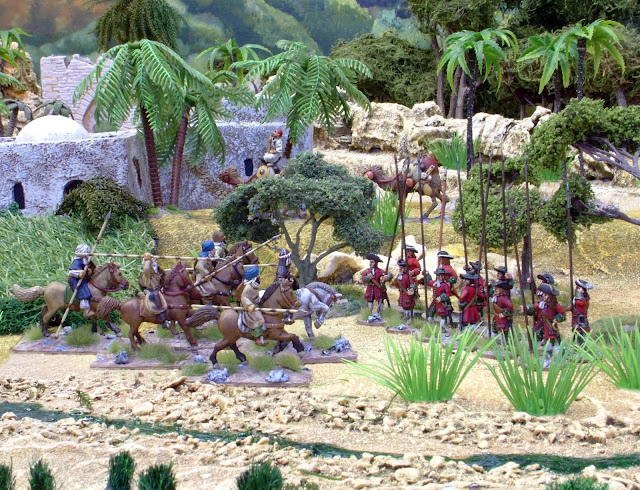 |
| The English against the Moors in Tangier 1683 |
2. Politics
The simple nationalism of the following centuries did not exist at this time. The professional soldier and sailor shifted loyalty based on career opportunity. The moving feast that could see states and leaders change sides based on the aggrandisement of their own dynasties is confusing and fascinating at the same time.
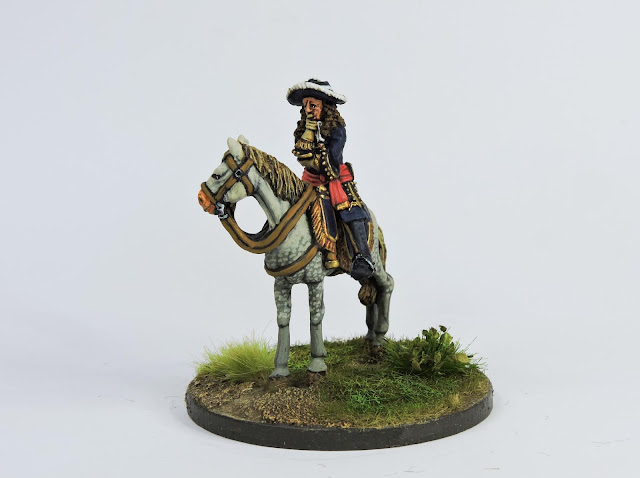 |
| King James - troubled or troublemaker? |
Not only changing sides but changing religion is not uncommon. The rejection of a military class such as the Huguenots by Louis XIV resulted in highly skillful French soldiers and generals fighting against their king is just a single example. Following the twisting, turning career paths of famous soldiers and admirals is part of the period's charm. Think of George Monck, Jean Bart, Eugene of Savoy and John Churchill as just a few of the men in the transfer market.
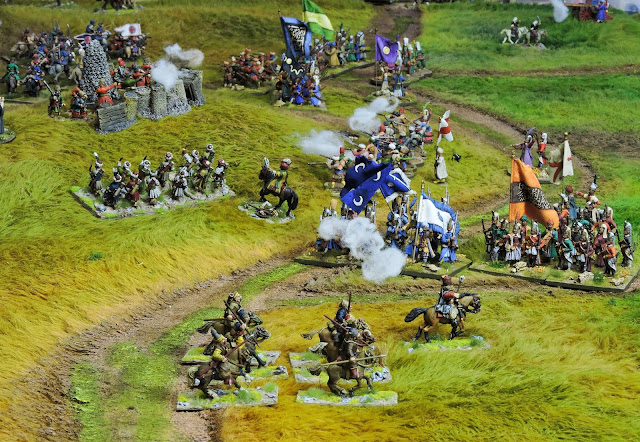 |
| The menace on the East - Ottomans overwhelm the Balkans |
3. Change
This was the cradle of modern armies and regimental traditions. A period of tactical, organizational and weapon transition. Ideas tried and tested for decades rejected and new ones adopted.
 |
| Freed Slaves in the Caribbean - carving out new futures |
The abandonment of the pike, the introduction of the bayonet, the evolution of fire doctrines and formation depths, cavalry tactics, logistics and artillery, widespread adoption of flintlock technology, naval line of battle, 100+ gun ships, marine corps, guerrilla fighting in the colonial theatres, guerre de course at sea, widespread state sponsored piracy, commercial empires which drove military conquest, challenge to the divine right of kings. It has the lot.
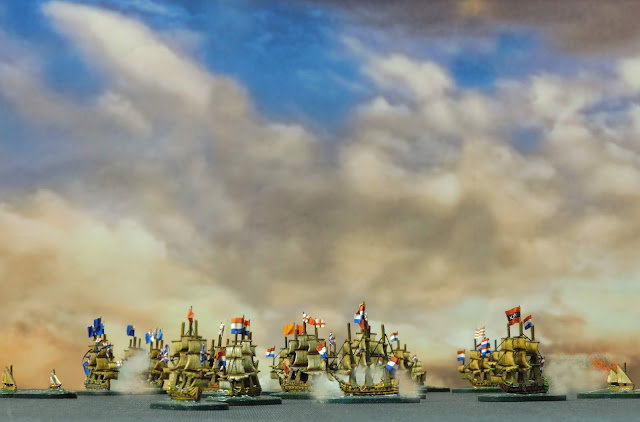 |
| Battle of the Texel 1673 |
4. Personalities
It is appropriate to simply list some of the giants of the period: Louis XIV, William of Orange, Jan Sobieski, Eugene of Savoy, Charles II and James II/VII, Luxembourg, Villars, Dusquesne, Tromp, De Ruyter, Monck, Monmouth, Prince Rupert, Sarsfield, Pepys, Churchill, Bart, Vauban, de Witt and Karl XI. The list could go on and on and on.
 |
| Prince of Waldeck loses the Battle of Fleurus 1690 |
5. Individualism
Wealthy and ambitious men were commissioned to raise and equip regiments or ships. The dress and tactics of their respective commands was by individual choice. This created an enormously rich visual feast which inspires wargamers.
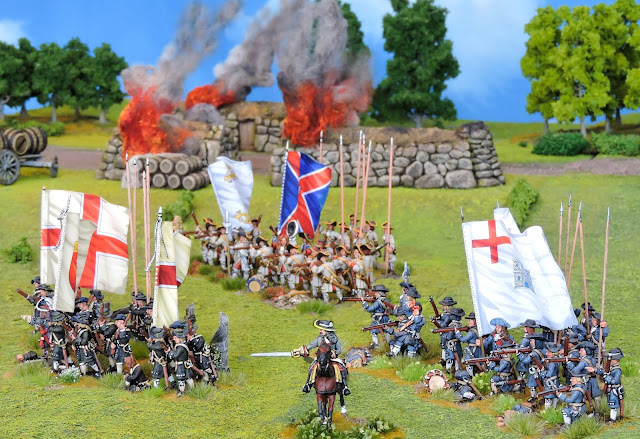 |
| Protestant Irish regiments advance 1690 |
Colour combinations, however bizarre probably were used by some regiment somewhere. I still cannot get past the strong preference I would have to include The Honourable Clotworthy Skeffington's Regiment of Foot in my OOB in preference to the 4th Foot.
 |
| Raiding Kent - Dutch Marines on the Medway 1667 |
6. Uniforms
Although some standardization existed, it is possible to field an army with as many as six or seven basic coat colours and up to twelve facing colours. Different hat colours and decorations, different types of equipment add further diversity. This creates perhaps the most colourful armies that can ever be found on a wargaming table. Forget endless red, blue or grey. This is a rainbow period in every sense.
 |
| Charging towards the Rhine 1690, The German nations strike back against King Louis! |
7. Flags
The fusion of high medieval heraldry, evolving political and nationalist symbolism and religious iconography makes for a fantastically diverse combination the likes of which has never been seen before or since. The riot of colour fluttering above your tabletop armies is almost reason enough in itself to love this period above any other.
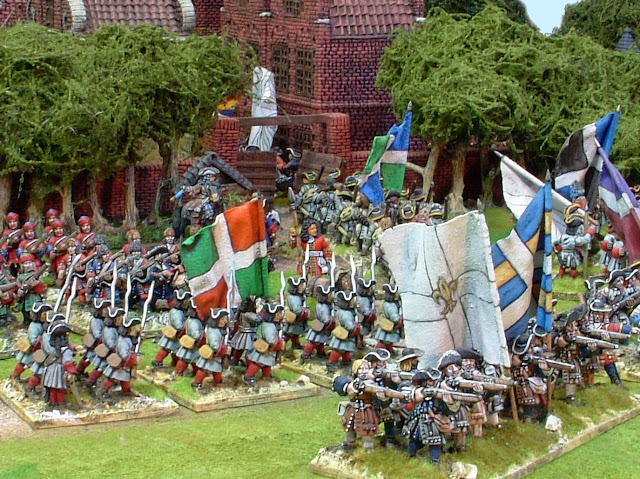 |
| Beneath the Lily Banners |
8. Legacy
What happened during this relatively short period of time has left an astonishing legacy in our modern world. Parliamentary democracy, constitutional monarchy, the modern racial demographics of the Americas, inherited wealth and title in Britain, free market capitalism, the relative financial strength of extraordinarily small countries such as the Netherlands and UK, the demarcation lines of culture and religion in south eastern Europe, religious persecution and prejudice, colonial exploitation... the list goes on and on.
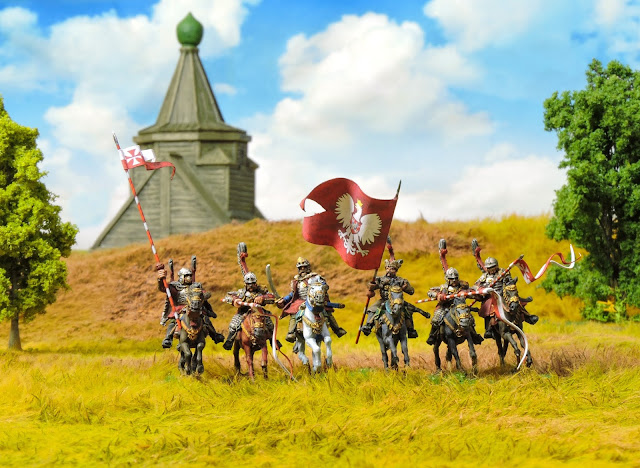 |
| Saviours of Europe - Polish noble cavalry 1683 - Kahlenberg |
It amazes me that many modern day points of view so strongly held are rooted in this period yet those holding such views have no idea why they hate whoever they hate or pledge allegiance to long dead figures who if returning from the grave may not recognize what modern day followers believe they stood for.
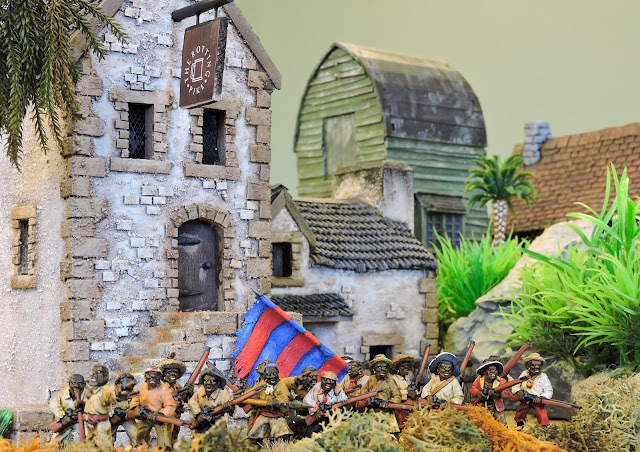 |
| Defending the colonies - Caribbean island militia |
9. Esoterica
Rather like that favourite yet obscure band that you treasured knowledge of as a teenager, this period is for the initiated only. It is not a casual wargaming period for dipping in and out of. Aficionados are hardcore obsessives who must know a button or cuff colour before even buying the figures. Every single little nugget of information uncovered in a musty old archive or withdrawn library book is treated like a precious jewel.
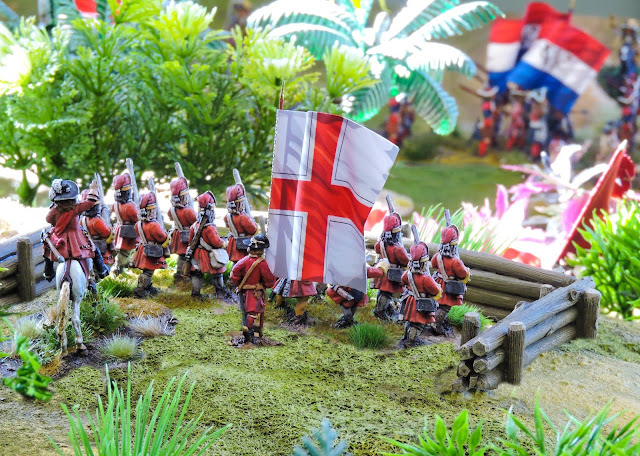 |
| Jungle action - Jacobite red coats defend a hill against Dutch West India Company forces |
Joy abounds when a previously unknown order of battle confirms the presence of a regiment. This is not WW2 uber weapon- stats table paralysis, Napoleonic naval light or some fantasy skirmish! This is the real deal. As more people access it you may have the same mixed feeling I had when Peter Jackson's Lord of the Rings epic hit the cinemas.
 |
| For what we are about to receive...... Civil disturbance |
A private world which had been mine from the age of twelve and a treasured book I had read from cover to cover eight times by the age of thirty had just been thrown open to a horde of fanboy/girl gatecrashers who consumed it and discarded it like fast food. It is almost worth contradicting this whole blog
 |
| Neerwinden 1693 |
10. Gaming
Contra to uninformed view, the games are fun, intense, dramatic, bloody and colourful. I have played over 300 land and naval games from 1mm to 54mm scale on tables 2x 2 to 30 x 18 feet. No matter whether my command is 12 skirmishing figures or Willem's army of 1,500 models at Neerwinden,
I always get the same thrill just before throwing the first dice and the same fantastic sense of satisfaction as the light goes out in the gaming room and the table is left in darkness.
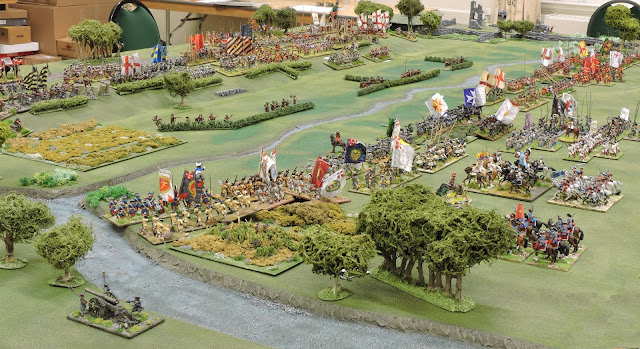 |
| Bloody Aughrim 1691 |
The alpha and omega of gaming for me! Look no further.

